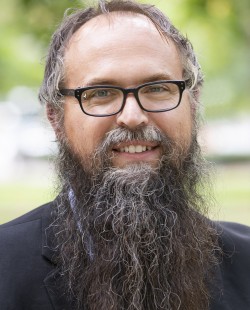What Type of Climate is Found Along Russia’s Northern Border?
Russia’s vast geography encompasses a variety of climate zones, with its northern border along the Arctic Ocean experiencing some of the most extreme conditions. Understanding this polar climate is crucial not only for ecological studies but also for the indigenous communities that have adapted their lifestyles to these harsh environments.
1. Geographic Overview of Russia’s Northern Border
Russia’s northern border stretches along the Arctic Ocean, encompassing significant regions such as:
– Siberia: A vast area characterized by its cold climate and expansive landscapes.
– Russian Arctic Territories: Includes remote areas with minimal human settlement and extreme weather.
– Coastal Areas: Borders the Barents, Kara, Laptev, East Siberian, and Chukchi Seas, which influence local weather patterns.
These regions are predominantly shaped by their proximity to the Arctic, leading to unique climatic conditions.
2. The Polar Climate of Russia’s Northern Border
A. Characteristics of the Arctic Climate
The climate along Russia’s northern border is classified as polar, characterized by:
– Extremely Cold Temperatures: Winter temperatures can plunge below -50°C in some areas.
– Short, Cool Summers: Summer months are brief, with average temperatures ranging from 0°C to 10°C.
– Low Precipitation: Most precipitation occurs as snow, with high winds contributing to harsh conditions.
B. The Tundra Climate Zone
The tundra biome dominates this region, featuring:
– Permafrost: A permanently frozen layer beneath the surface that affects drainage and vegetation.
– Limited Vegetation: Dominated by mosses, lichens, and low shrubs due to short growing seasons.
– Short Growing Seasons: Vegetation has a limited time to thrive during the brief summer months.
3. Seasonal Variations in the Northern Climate
A. Winter (October to April)
During winter:
– Long Nights: Some areas experience polar night conditions with limited sunlight.
– Sub-Zero Temperatures: Persistent cold can lead to extreme weather conditions.
B. Summer (June to August)
In summer:
– Midnight Sun: Regions experience continuous daylight for extended periods.
– Cool Temperatures: Average summer temperatures remain low compared to other climates.
4. Impact of the Northern Climate on Local Ecosystems
The polar climate significantly influences local ecosystems:
– Arctic Wildlife: Species like polar bears, Arctic foxes, and migratory birds are adapted to survive in these conditions.
– Tundra Vegetation Adaptations: Plants have evolved to withstand harsh climates with short growing seasons.
– Climate Change Effects: Thawing permafrost and changing migration patterns threaten both wildlife and indigenous livelihoods.
5. Human Adaptation and Challenges in the Northern Border Region
Indigenous communities face unique challenges due to the extreme climate:
– Traditional Lifestyles: Many rely on reindeer herding, hunting, and fishing, which are directly impacted by climatic changes.
– Economic Challenges: Limited agricultural opportunities and isolation complicate resource access.
– Resource Extraction Impact: The northern border plays a crucial role in Russia’s economy through oil and gas exploration, which poses additional environmental risks.
FAQs
– What’s the average temperature in Russia’s Arctic region?
Average winter temperatures can drop below -50°C, while summer averages range from 0°C to 10°C.
– How does the Arctic climate affect Russia’s economy?
The Arctic region is vital for oil and gas production, accounting for over 80% of Russia’s natural gas output.
– What is permafrost, and why is it significant in the tundra?
Permafrost is a permanently frozen layer that affects soil drainage and vegetation growth in tundra regions.
– How is climate change impacting Russia’s northern border?
Climate change leads to permafrost thawing, altering animal migration patterns and threatening indigenous livelihoods.
– What animals are unique to the Arctic region in Russia?
Notable species include polar bears, Arctic foxes, reindeer, and various migratory birds.
Conclusion
The polar climate along Russia’s northern border presents unique challenges and opportunities for both ecosystems and human communities. Understanding these climatic conditions is essential for effective environmental conservation and adaptation strategies for indigenous populations facing rapid changes due to climate dynamics.

Kyle Whyte is a notable scholar and professor at the University of Michigan, holding positions such as the George Willis Pack Professor in the School for Environment and Sustainability and Professor of Philosophy. Specializing in environmental justice, his work critically examines climate policy and Indigenous peoples’ ethics, emphasizing the nexus between cooperative scientific endeavors and Indigenous justice. As an enrolled Citizen Potawatomi Nation member, he brings a vital perspective to his roles as a U.S. Science Envoy and member of the White House Environmental Justice Advisory Council. His influential research is supported by various prestigious organizations including the National Science Foundation, and disseminated through publications in high-impact journals. Kyle actively contributes to global Indigenous research methodologies and education, with affiliations to numerous institutes and societies dedicated to traditional knowledge and sustainability. Recognized for his academic and community engagement, Kyle has earned multiple awards and served in various visiting professorships. His efforts extend to leadership positions on boards and committees focused on environmental justice nationwide.
